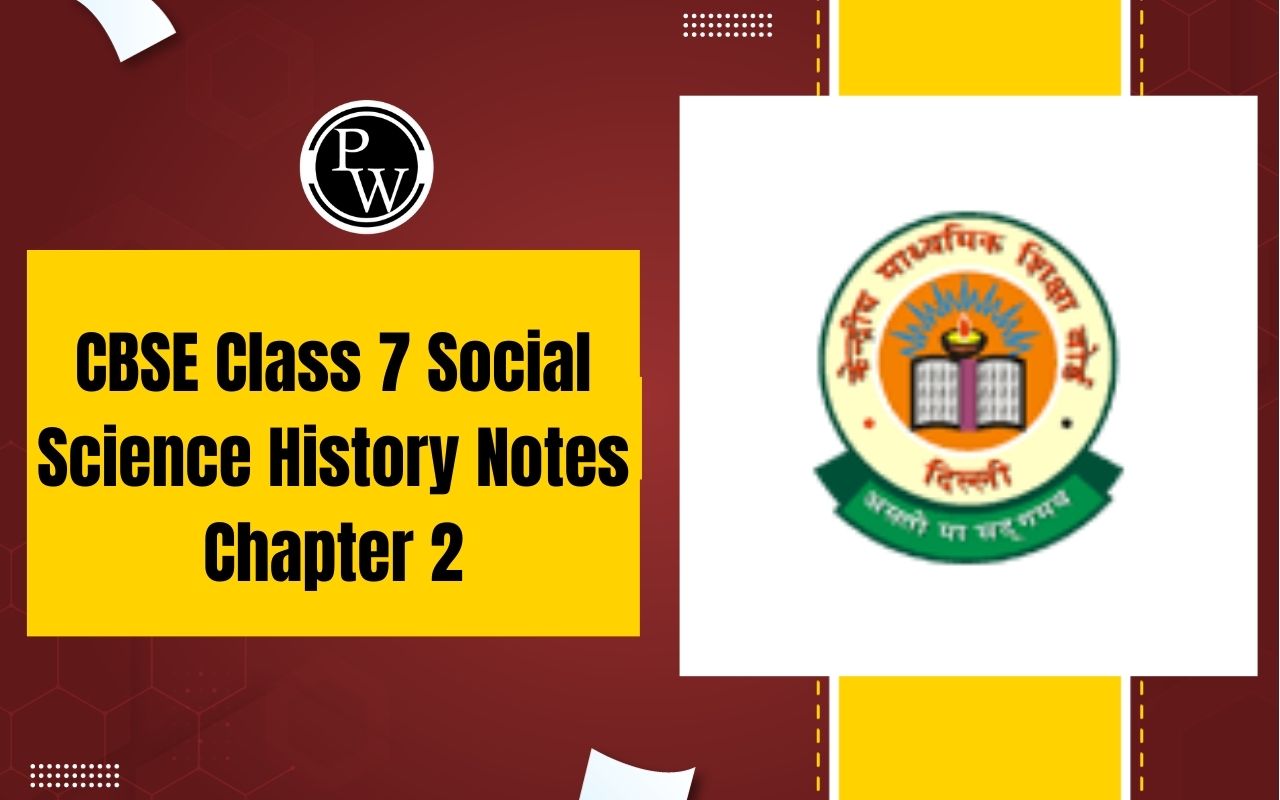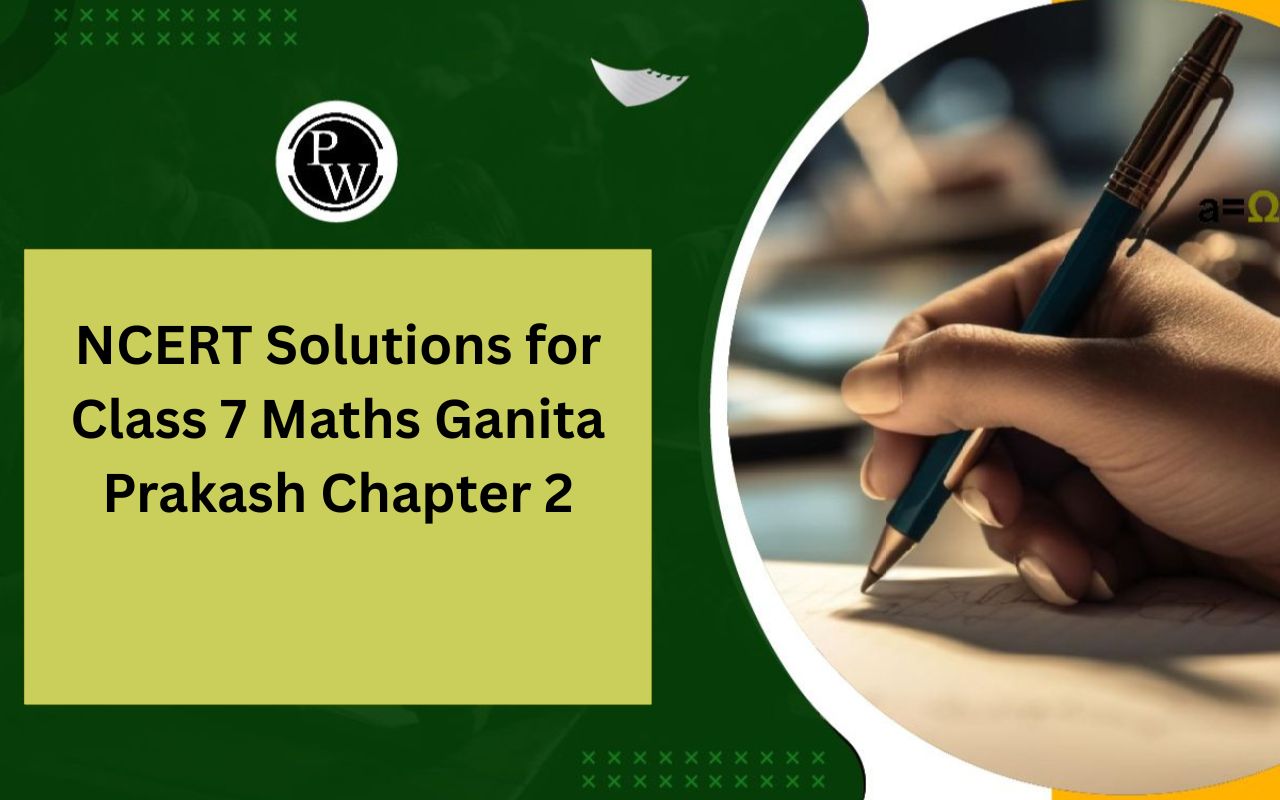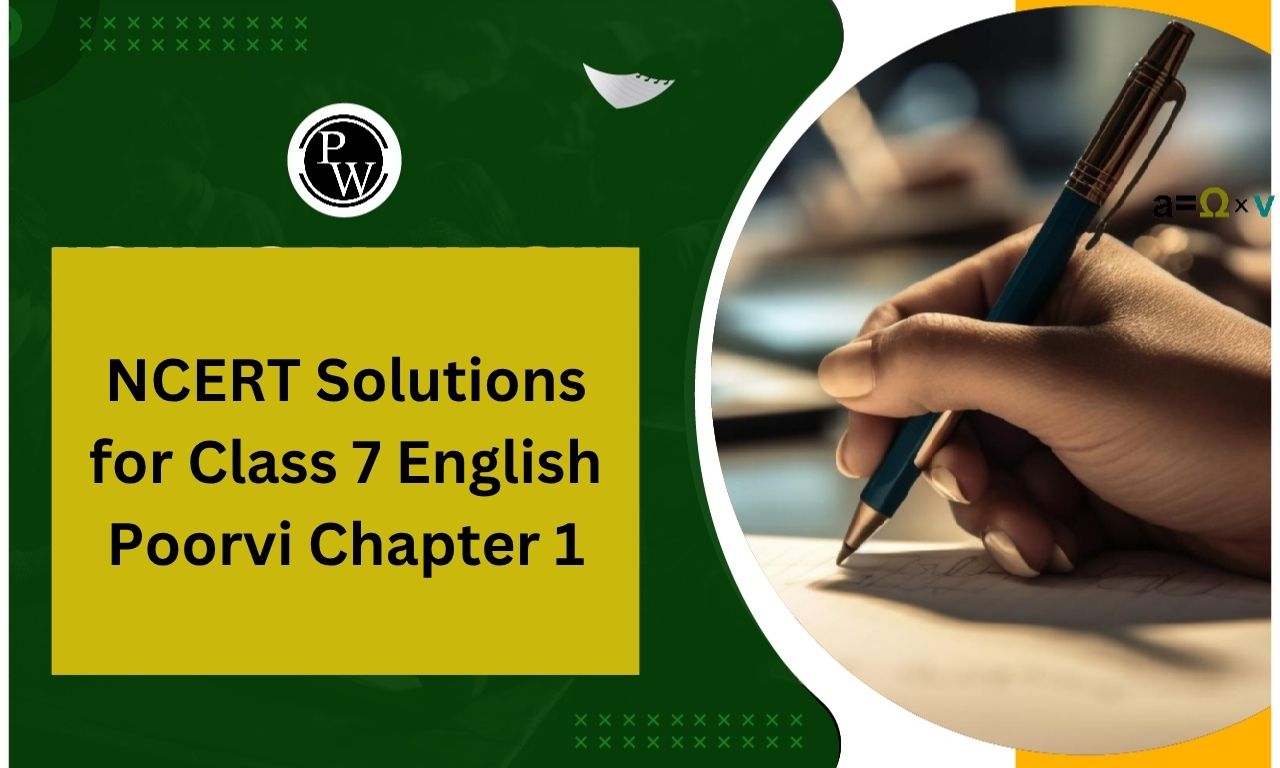
CBSE Class 7 Social Science History Notes Chapter 2: Chapter 2 of the CBSE Class 7 Social Science History book, "New Kings and Kingdoms," focuses on the new dynasties and kingdoms emerged in India between the 7th and 12th centuries. During this time, powerful regional kingdoms like the Cholas, Palas, and Rajputs rose to prominence.
These kings expanded their territories through wars and alliances. The chapter explains how these kingdoms were governed, focusing on the role of land grants and temples. Temples were important not only for worship but also as economic centers. The chapter also discusses the methods of warfare, the importance of having strong armies, and the use of inscriptions called prashastis to praise the kings' achievements. This chapter helps students understand the changes in society and politics during this period in India's history.CBSE Class 7 Social Science History Notes Chapter 2 New Kings and Kingdoms Overview
These notes, prepared by subject experts at Physics Wallah, cover Chapter 2 of the CBSE Class 7 Social Science History book, titled "New Kings and Kingdoms." The chapter explains how these kingdoms were governed, focusing on the importance of land grants and temples. Kings gave land to Brahmins and built temples to show their power and gain support. Temples were important not only for worship but also as economic centers. The chapter also discusses the methods of warfare, the importance of strong armies, and the use of inscriptions called prashastis to praise the kings' achievements. These expert notes help students understand the social and political changes during this period in India's history.CBSE Class 7 Social Science History Notes Chapter 2 PDF
For detailed notes on Chapter 2 of the CBSE Class 7 Social Science History book, titled "New Kings and Kingdoms," you can check out the PDF linked below. This chapter talks about how new rulers and kingdoms emerged in India between the 7th and 12th centuries. These notes, made by subject experts at Physics Wallah, help you understand the changes in society and politics during this time in India's history.CBSE Class 7 Social Science History Notes Chapter 2 PDF
CBSE Class 7 Social Science History Notes Chapter 2 New Kings and Kingdoms
The Emergence of New Dynasties
The emergence of new dynasties in medieval India, particularly during the 7th century, marked a significant shift in the socio-political landscape of the subcontinent. Prior to this period, various regions were dominated by powerful landlords and warrior chiefs who operated as subordinates or samantas under existing kings. These samantas were obliged to offer gifts to their kings, attend their courts, and provide military support. However, as these samantas amassed wealth and power, they began to assert their independence and declare themselves as maha-samantas or great lords of their regions. A compelling example of this assertion of power is illustrated by the Rashtrakutas in the Deccan region, who were originally subordinates to the Chalukyas of Karnataka. In the mid-8th century, Dantidurga, a Rashtrakuta chief, seized control from his Chalukya overlord through a ritual known as hiranya-garbha, or the golden womb. This ritual, conducted with the assistance of Brahmanas, was believed to symbolize the "rebirth" of the sacrificer as a Kshatriya, irrespective of their birth status. Through this ritual and subsequent actions, Dantidurga established the Rashtrakuta dynasty as a dominant force in the Deccan. There were instances where individuals from enterprising families utilized their military prowess to carve out kingdoms for themselves. For instance, Mayurasharman of the Kadamba dynasty and Harichandra of the Gurjara-Pratihara dynasty were Brahmanas who abandoned their traditional professions and embraced arms. They successfully established kingdoms in regions such as Karnataka and Rajasthan, respectively. Their military acumen and strategic vision enabled them to assert their authority and create dynasties that would shape the political landscape of medieval India. These examples underscore the fluidity and dynamism of medieval Indian society, where individuals and groups could rise to prominence through military conquests, strategic alliances, and assertion of independence from existing power structures. The emergence of new dynasties not only transformed the political map but also contributed to the diversity and complexity of India's cultural and historical tapestry.Administration in the Kingdoms
In the administration of the kingdoms during medieval India, new kings often assumed grandiose titles such as maharaja-adhiraja (great king, overlord of kings) and tribhuvana-chakravartin (lord of the three worlds) to signify their authority and dominance. However, they also shared power with various groups within society, including their samantas (subordinates), as well as associations representing peasants, traders, and Brahmanas. These kingdoms relied heavily on the collection of resources from the producers, which primarily consisted of peasants, cattle-keepers, artisans, and other laborers. These producers were often required to surrender a portion of their produce, which was sometimes labeled as "rent" claimed by the lord who asserted ownership over the land. Revenue was also collected from traders who operated within the kingdom's territories. The resources obtained through taxation and levies were utilized for various purposes within the kingdom. A significant portion was allocated to maintaining the king's establishment, including the upkeep of the royal court and administration. Funds were also allocated for the construction of temples and forts, which served both religious and strategic purposes. Furthermore, these resources were often used to finance military campaigns and wars. Victories in battles led to the acquisition of wealth in the form of plunder, as well as access to additional land and trade routes, thereby expanding the kingdom's territory and influence. In terms of administration, key functionaries responsible for revenue collection were typically appointed from influential families within the kingdom. These positions were often hereditary, passing down within specific lineages. Similarly, positions within the army were also often held by close relatives of the king, further consolidating power within the royal family. Overall, the administration of medieval kingdoms in India was characterized by a complex system of governance that relied on the collection of resources from various segments of society to sustain the monarchy, finance infrastructure projects, and support military endeavors.Prashastis and Land Grants
In medieval India, the practice of composing prashastis, or eulogistic inscriptions, played a significant role in shaping the image of rulers and their administrations. These prashastis were typically crafted by learned Brahmanas, who occasionally held administrative positions within the kingdom. While these compositions may not always present literal truths, they offer valuable insights into how rulers wished to portray themselves, often depicting them as brave and victorious warriors. One common form of reward bestowed upon Brahmanas for their services was grants of land. These land grants were meticulously recorded on copper plates, which served as legal documents confirming the transfer of land ownership. The copper plates containing the details of the grant were presented to the recipients, ensuring the authenticity and permanence of the transaction. An exceptional example from the 12th century is a lengthy Sanskrit poem chronicling the history of the kings who ruled over Kashmir. This poem, composed by the historian Kalhana, stands out for its critical examination of rulers and their policies, diverging from the typical eulogistic tone found in other prashastis. Kalhana's work is remarkable not only for its critical perspective but also for its extensive use of diverse sources, including inscriptions, documents, eyewitness accounts, and earlier histories. Kalhana's approach to historical writing sets his work apart, providing a more nuanced and multifaceted understanding of the political landscape of medieval Kashmir. By drawing from a wide range of sources, Kalhana was able to offer a comprehensive and balanced account of the region's history, highlighting not only the achievements of rulers but also their shortcomings and the broader socio-political dynamics at play. Overall, the practice of composing prashastis and granting land played a crucial role in legitimizing the authority of rulers and rewarding their supporters. However, the critical approach adopted by historians like Kalhana reminds us of the importance of questioning and critically analyzing historical narratives to uncover the complexities and nuances of the past.Warfare for Wealth
Ruling dynasties, while centered in specific regions, often sought to extend their control over neighboring areas, leading to conflicts and struggles for dominance. One such coveted area was the city of Kanauj in the Ganga valley, which witnessed centuries-long contention among rulers belonging to the Gurjara-Pratihara, Rashtrakuta, and Pala dynasties. This prolonged conflict, involving three distinct parties, is commonly referred to by historians as the "tripartite struggle." In their bid to assert authority and showcase their power and resources, rulers frequently undertook ambitious construction projects, notably building grand temples. Consequently, during military confrontations, these temples became prime targets, given their immense wealth. A notable figure in this narrative is Sultan Mahmud of Ghazni, Afghanistan, who reigned from 997 to 1030 and extended his dominion over parts of Central Asia, Iran, and the northwestern region of the Indian subcontinent. Mahmud conducted frequent raids on the subcontinent, targeting affluent temples such as the renowned Somnath temple in Gujarat. The riches plundered by Mahmud were utilized to establish a magnificent capital city at Ghazni. In his pursuit to understand the lands he conquered, Mahmud commissioned the scholar Al-Biruni to compile an account of the subcontinent, drawing upon insights from Sanskrit scholars. This Arabic work, known as the Kitab ul-Hind, provided valuable insights into the socio-cultural fabric of the Indian subcontinent. Other notable rulers engaged in warfare include the Chahamanas, later known as the Chauhans, who governed the regions around Delhi and Ajmer. Seeking to expand their influence, they encountered resistance from the Chalukyas of Gujarat and the Gahadavalas of western Uttar Pradesh in their endeavors to control territories to the west and east, respectively. Among the Chahamana rulers, Prithviraja III (1168-1192) is particularly renowned. While he achieved a significant victory over an Afghan ruler named Sultan Muhammad Ghori in 1191, he suffered defeat at Ghori's hands the following year, in 1192.A Closer Look: The Cholas
From Uraiyur to Thanjavur
The rise of the Chola dynasty to power is a fascinating tale of ambition and conquest. It all began with a minor chiefly family known as the Muttaraiyar, who served as subordinates to the Pallava kings of Kanchipuram in the Kaveri delta region. However, in the mid-9th century, Vijayalaya, hailing from the ancient Chola family of Uraiyur, seized control of the delta from the Muttaraiyar. He founded the city of Thanjavur and erected a temple dedicated to the goddess Nishumbhasudini. Under the successive rule of Vijayalaya's descendants, the Chola kingdom expanded its dominion by annexing neighboring territories, including those of the Pandyan and Pallava dynasties to the south and north, respectively. Notably, Rajaraja I, one of the most influential Chola rulers, ascended the throne in 985 and further expanded the kingdom's control over these regions. He also implemented significant administrative reforms, strengthening the empire's governance structure. Rajaraja's son, Rajendra I, continued his father's policies and embarked on ambitious military expeditions. He not only consolidated Chola control over South India but also extended his campaigns beyond the subcontinent, raiding the Ganga valley, Sri Lanka, and even countries in Southeast Asia. Rajendra's naval prowess enabled him to establish Chola dominance in maritime trade routes, further enhancing the kingdom's prestige and influence. The architectural and sculptural marvels of the Chola period, particularly the grand temples of Thanjavur and Gangaikondacholapuram, reflect the dynasty's cultural and artistic achievements. These temples, built under the patronage of rulers like Rajaraja and Rajendra, served as centers of craft production and economic activity. The Chola temples were not merely places of worship but also hubs of social, economic, and cultural life, supported by extensive land endowments from rulers and devotees. Among the crafts associated with these temples, the production of bronze sculptures stood out as a hallmark of Chola artistry. Renowned for their intricate craftsmanship, Chola bronze images are considered among the finest in the world, portraying not only deities but also devotees in reverent poses. The agricultural prosperity of the Chola kingdom played a pivotal role in its growth and development. The fertile lands of the Kaveri delta facilitated large-scale rice cultivation, supported by sophisticated irrigation systems. The construction of embankments, canals, and tanks ensured efficient water management, allowing for the cultivation of multiple crops throughout the year. Agriculture flourished under the active involvement of both rulers and local communities, reflecting the Cholas' commitment to fostering economic prosperity and social welfare. In essence, the Chola dynasty's legacy is a testament to its multifaceted achievements in warfare, art, architecture, and agriculture, leaving an indelible mark on the history and culture of South India.The Administration of the Empire
The organization of administration in the Chola Empire was structured around the prosperity brought about by the expansion of irrigation agriculture. This prosperity was evident in the settlements of peasants, known as ur, which formed the basic unit of governance. These villages were organized into larger administrative units called Nadu. Both the village councils and the Nadu played crucial roles in the administration of the empire. They were responsible for dispensing justice, collecting taxes, and overseeing various aspects of local governance. Within the Nadu, wealthy peasants belonging to the Vellala caste wielded significant influence over administrative affairs. Under the supervision of the central Chola government, these affluent landowners managed the day-to-day operations of the Nadu. To honor their contributions and maintain their loyalty, Chola kings bestowed prestigious titles upon these wealthy landowners, such as muvendavelan (a peasant serving three kings) and araiyar (chief). These titles served as symbols of respect and recognition of their important roles within the state apparatus. Brahmanas played a significant role in the administration of the empire, primarily through the acquisition of land grants known as brahmadeya. These grants led to the emergence of Brahmana settlements in the Kaveri valley and other parts of South India. Each brahmadeya was overseen by an assembly or sabha comprising prominent Brahmana landholders, who efficiently managed the affairs of their respective settlements. The decisions and proceedings of these assemblies were meticulously recorded in inscriptions, often inscribed on the stone walls of temples. These inscriptions served as valuable records of administrative practices and governance structures. Associations of traders known as anagrams occasionally undertook administrative functions within towns. Inscriptions from Uttaramerur in Tamil Nadu provide detailed insights into the organizational structure of these assemblies. The sabha at Uttaramerur comprised separate committees responsible for various tasks such as managing irrigation works, gardens, and temples. Membership to these committees was determined through a unique process where names were written on palm leaf tickets and drawn from an earthenware pot, ensuring transparency and fairness in decision-making processes. The administration of the Chola Empire was characterized by a decentralized system with a focus on local governance and participation. Wealthy landowners, Brahmanas, and trade associations played pivotal roles in the management of administrative affairs, contributing to the stability and prosperity of the empire.Benefits of CBSE Class 7 Social Science History Notes Chapter 2 New Kings and Kingdoms
- Knowledge of Governance Structures : Students gain knowledge about the administrative systems of medieval kingdoms, including the role of land grants, temple patronage, and military organization.
- Appreciation of Historical Transformations : By studying the rise of new dynasties and the dynamics of power struggles, students develop a deeper understanding of how historical processes shape societies.
- Cultural and Architectural Insights : The chapter discusses the construction of temples and forts as symbols of power, providing insights into medieval Indian architecture and cultural practices.
- Critical Thinking and Analysis : Students are encouraged to critically analyze historical sources such as inscriptions and prashastis, fostering analytical and critical thinking skills.
- Connection to Modern Governance : Studying historical governance structures helps students draw parallels to modern-day governance systems, enhancing their understanding of political structures and processes.
- Cultural Appreciation : Learning about the patronage of temples and the significance of religious institutions in medieval India fosters an appreciation for the cultural and religious diversity of the subcontinent.
CBSE Class 7 Social Science History Notes Chapter 2 FAQs
Who were the new kings and kingdoms that emerged during the medieval period in India?
The medieval period in India witnessed the emergence of new dynasties and kingdoms such as the Cholas, Palas, and Rajputs, among others.
What factors contributed to the rise of new dynasties and kingdoms?
Factors such as military conquests, strategic alliances, economic prosperity, and administrative innovations contributed to the rise of new dynasties and kingdoms.
How did rulers legitimize their rule and gain support from the populace?
Rulers often legitimized their rule by granting land to Brahmins, constructing temples, and patronizing religious institutions. They also formed alliances with influential families and shared power with local councils and associations.
What were the administrative structures of medieval kingdoms like?
Medieval kingdoms had decentralized administrative structures. Village councils and larger units called Nadu played key roles in governance, dispensing justice, collecting taxes, and overseeing local affairs.
What role did Brahmins play in the administration of medieval kingdoms?
Brahmins received land grants and played significant roles in the administration of kingdoms. They managed Brahmadeya settlements and served on assemblies responsible for governance and decision-making.
🔥 Trending Blogs
Talk to a counsellorHave doubts? Our support team will be happy to assist you!

Check out these Related Articles
Free Learning Resources
PW Books
Notes (Class 10-12)
PW Study Materials
Notes (Class 6-9)
Ncert Solutions
Govt Exams
Class 6th to 12th Online Courses
Govt Job Exams Courses
UPSC Coaching
Defence Exam Coaching
Gate Exam Coaching
Other Exams
Know about Physics Wallah
Physics Wallah is an Indian edtech platform that provides accessible & comprehensive learning experiences to students from Class 6th to postgraduate level. We also provide extensive NCERT solutions, sample paper, NEET, JEE Mains, BITSAT previous year papers & more such resources to students. Physics Wallah also caters to over 3.5 million registered students and over 78 lakh+ Youtube subscribers with 4.8 rating on its app.
We Stand Out because
We provide students with intensive courses with India’s qualified & experienced faculties & mentors. PW strives to make the learning experience comprehensive and accessible for students of all sections of society. We believe in empowering every single student who couldn't dream of a good career in engineering and medical field earlier.
Our Key Focus Areas
Physics Wallah's main focus is to make the learning experience as economical as possible for all students. With our affordable courses like Lakshya, Udaan and Arjuna and many others, we have been able to provide a platform for lakhs of aspirants. From providing Chemistry, Maths, Physics formula to giving e-books of eminent authors like RD Sharma, RS Aggarwal and Lakhmir Singh, PW focuses on every single student's need for preparation.
What Makes Us Different
Physics Wallah strives to develop a comprehensive pedagogical structure for students, where they get a state-of-the-art learning experience with study material and resources. Apart from catering students preparing for JEE Mains and NEET, PW also provides study material for each state board like Uttar Pradesh, Bihar, and others
Copyright © 2025 Physicswallah Limited All rights reserved.












